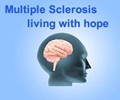Highlight:
- The results of two phase 3 clinical trials, the SUNBEAM and the RADIANCE Part B, were recently presented
- The studies evaluated the efficacy and safety of ozanimod as compared to interferon beta-1a for the treatment of relapsing multiple sclerosis
- If the drug receives approval from the regulatory authorities, it will provide an additional option for patients with relapsing multiple sclerosis
- Both the doses significantly reduced the annualized relapse rate (ARR) as compared to patients on weekly injections of interferon β-1a.
- The number of new and enlarging lesions due to multiple sclerosis in the brain, as demonstrated on MRI, were significantly reduced to a greater extent in patients taking ozanimod as compared to interferon β-1a. Ozanimod significantly slowed the brain loss in the patients as compared to interferon in patients taking 1 mg of ozanimod in the SUNBEAM trial and with both the doses in the RADIANCE Part B trial.
- The side effects including the serious effects were similar in the two groups. The most common side effects with ozanimod in both the studies were nasopharyngitis, headache, and upper respiratory tract infection.
About Ozanimod
Ozanimod is a drug that is a selective sphingosine 1-phosphate 1 (S1PR1) and 5 (S1PR5) receptor modulator. It reduces inflammation and thereby prevents flare-ups in multiple sclerosis. It is administered orally once a day. The drug is also likely to be tested in inflammatory bowel disease that includes ulcerative colitis and Crohn’s disease.About Multiple Sclerosis
Multiple sclerosis is an autoimmune disorder that results in damage to the myelin sheath surrounding nerves. It causes various neurological symptoms that frequently relapse ultimately resulting in disability. Current treatments are aimed at modifying the course of the disease, relieving symptoms and helping patients cope with the disability through physical therapy.Reference:
- 7th Joint European Committee for Treatment and Research in Multiple Sclerosis-Americas Committee for Treatment and Research in Multiple Sclerosis (ECTRIMS-ACTRIMS) 2017. Parallel Session 13, oral presentation 232. Multiple Sclerosis Journal 2017; 23: (S3) 8–84Late Breaking News session, oral presentation 280. Multiple Sclerosis Journal 2017; 23: (S3) 976–1023
Source-Medindia















